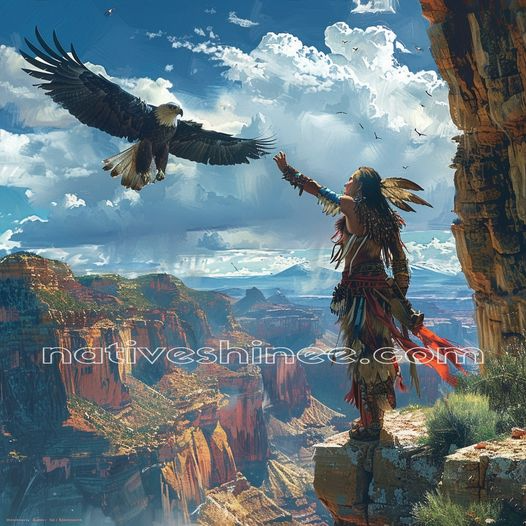Native bison once roamed the plains of North America in vast numbers, shaping the landscape and supporting diverse ecosystems. However, due to extensive hunting and habitat loss, their populations plummeted to the brink of extinction. Today, concerted efforts are being made to bring back these majestic creatures, highlighting their ecological, cultural, and economic importance. This article explores the history, challenges, and triumphs of bison restoration and how you can contribute to this vital cause.
Historical Context of Native Bison
1. Bison in Pre-Colonial North America
Before European settlers arrived, bison were the dominant herbivores on the North American plains. These massive animals, also known as buffalo, played a crucial role in maintaining the health of the grasslands. They grazed on a variety of plant species, which helped to keep the vegetation balanced and prevent any one species from becoming too dominant. Bison also created wallows, or shallow depressions in the ground, which collected rainwater and provided habitats for other species.
2. The Decline of Bison Populations
The arrival of European settlers in the 17th century marked the beginning of a dramatic decline in bison populations. Extensive hunting for bison hides and meat, coupled with the expansion of agricultural land, decimated their numbers. By the late 19th century, bison were nearly extinct, with fewer than 1,000 individuals remaining. This loss had devastating effects on the plains ecosystem and the indigenous peoples who relied on bison for their livelihood.
Efforts in Bison Restoration and Conservation
1. Early Conservation Efforts
The near-extinction of bison sparked the first conservation efforts in the early 20th century. Visionaries like William Hornaday and organizations such as the American Bison Society worked tirelessly to protect the remaining bison. These early initiatives involved breeding programs and the establishment of protected areas where bison could roam freely. 
2. Modern Restoration Programs
Today, bison restoration has gained momentum thanks to the efforts of various government agencies, non-governmental organizations, and indigenous groups. Successful projects include the reintroduction of bison to national parks like Yellowstone and the Great Plains. These programs not only focus on increasing bison numbers but also on restoring the ecological balance of the plains.
Ecological Benefits of Bison Reintroduction
1. Role of Bison in Ecosystem Restoration
Bison play a pivotal role in maintaining the health of prairie ecosystems. Their grazing patterns promote plant diversity by preventing any single species from dominating the landscape. Bison also help aerate the soil with their hooves, which improves water infiltration and supports healthy plant growth. Their wallows create microhabitats that benefit various plant and animal species.
2. Supporting Biodiversity
The presence of bison supports a wide range of biodiversity. They provide food for predators and scavengers, and their grazing helps maintain habitats for species such as prairie dogs, birds, and insects. Bison restoration has a cascading effect, enhancing the overall resilience and productivity of the ecosystem.
Cultural Significance of Bison to Indigenous Communities
1. Historical Relationship Between Indigenous Peoples and Bison
For many indigenous communities, bison were more than just a source of food and materials; they were integral to their culture and spirituality. Bison provided everything from meat and hides to tools and shelter. Many tribes held ceremonies and traditions that centered around bison, reflecting their deep respect and reverence for these animals.
2. Modern Cultural Revival
Today, indigenous-led bison restoration projects are helping to revive these cultural connections. Tribes such as the Blackfeet, the Lakota, and the Assiniboine are leading efforts to reintroduce bison to their ancestral lands. These projects not only support ecological restoration but also promote cultural renewal and community well-being.
Economic Benefits of Bison Restoration
1. Ecotourism and Wildlife Tourism
Bison have become a significant attraction for wildlife tourists. National parks and reserves that have reintroduced bison see increased visitor numbers, which boosts local economies. Ecotourism centered around bison viewing helps generate revenue that can be reinvested in conservation efforts and community development.

2. Sustainable Farming and Bison Products
Bison farming offers an alternative to traditional livestock agriculture. Bison meat is leaner and higher in protein compared to beef, making it a healthier option for consumers. Sustainable bison farming practices also have a lower environmental impact, promoting soil health and reducing greenhouse gas emissions. The market for bison products, including meat and leather, continues to grow, providing economic opportunities for farmers.
How You Can Support Bison Conservation
1. Donations and Funding
Supporting bison conservation financially is one of the most direct ways to help. Donations to organizations such as the National Wildlife Federation, the American Prairie Reserve, and tribal conservation programs are crucial for funding restoration projects. Your contributions can help support habitat restoration, research, and community outreach efforts.
2. Volunteer Opportunities
Many conservation organizations offer volunteer opportunities for those who want to get involved hands-on. Volunteering can range from assisting with fieldwork and monitoring bison populations to helping with educational programs and community events. Sharing success stories from volunteers can inspire others to join the cause.
3. Spreading Awareness
Raising awareness about bison conservation is essential. Educate your friends, family, and community about the importance of bison restoration. Use social media platforms to share information and stories about bison conservation efforts. The more people know about the significance of bison, the more support these initiatives will receive.

Conclusion
The revival of native bison populations is a testament to the power of conservation efforts and the resilience of nature. Bison restoration not only benefits ecosystems but also supports cultural and economic revitalization. By getting involved, whether through donations, volunteering, or spreading awareness, you can contribute to the continued success of bison conservation. Join the movement to bring back the bison and help restore the balance of our great plains.











